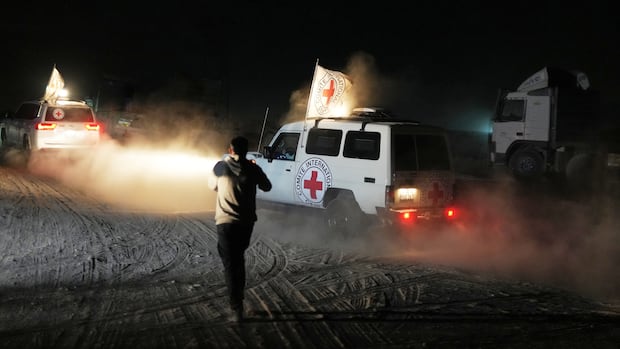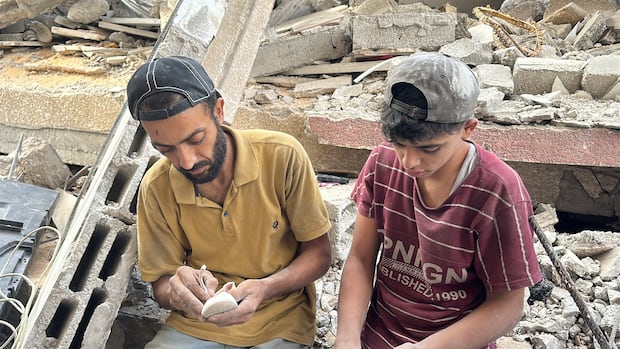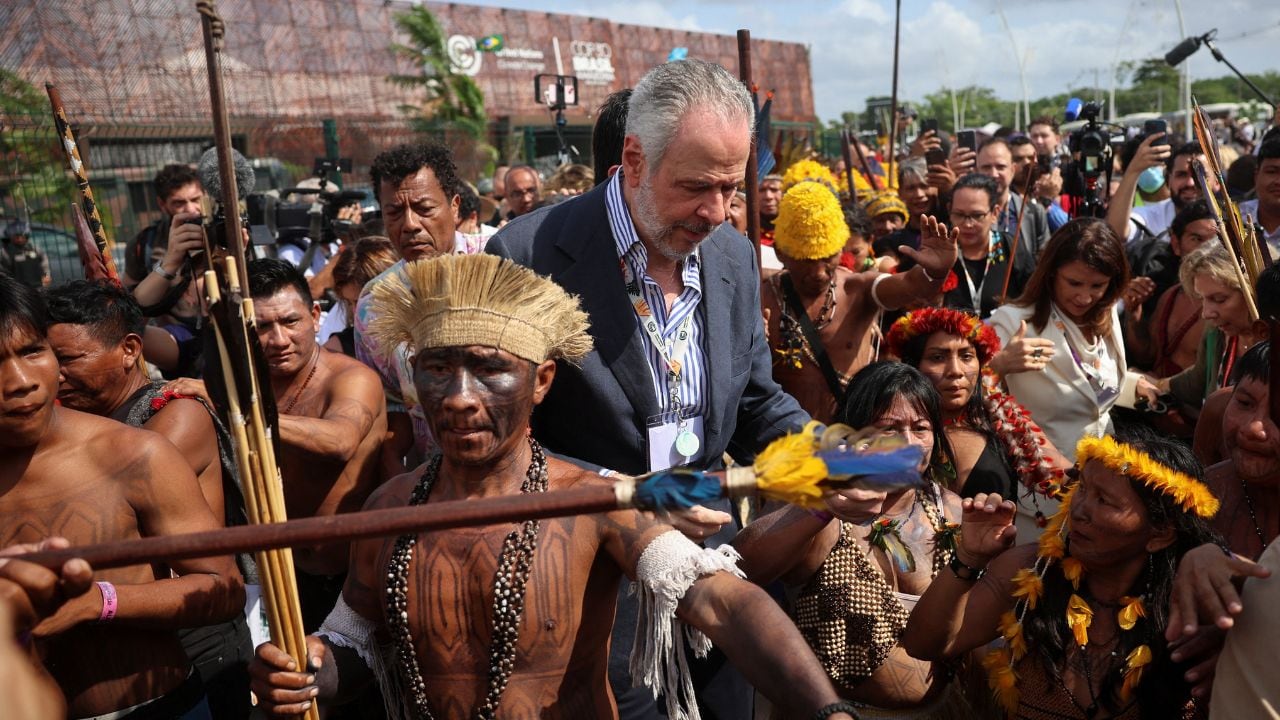As It Happens6:33Evacuating Iran's capital amid severe drought isn't possible, says UN expert
As Iran faces severe drought, Kaveh Madani says the situation in his home country is dire.
“We are talking about a few days or even weeks of water left for Tehran,” the director of the UN University Institute for Water, Environment and Health told As It Happens host Nil Koksal.
“Day zero as we call it in the water sector is near. It’s a day that the taps would run dry,” said Madani, who spoke to Koksal from Richmond Hill, Ont.
Iran, a country of more than 90 million, is facing an unprecedented water and energy crisis as reservoirs shrink to record lows, endangering drinking water and power supplies.
The nation is grappling with its sixth consecutive year of drought, with about 10 per cent of Iran's dams effectively running dry nation wide.
Access to water has been limited at times, and Iran's president has even suggested evacuating the nation's capital.
“If it doesn’t rain in Tehran by late November, we’ll have to ration water,” said Iran's President Masoud Pezeshkian last week. “And if it still doesn’t rain, we’ll have to evacuate Tehran."
Underlying IssuesMadani says Iran’s “water bankruptcy problem” is nothing new. Neither is it solely the result of a lack of rainfall, he says.
The former deputy head of Iran’s Department of Environment blames decades of mismanagement, lack of foresight and an overreliance on groundwater resources.
“More than 70 per cent of Iran's over 90 million people are in a few metropolitan areas. That sort of human concentration anywhere in the world would cause trouble,” said Madani.
He pointed to an inefficient agricultural sector that consumes about 90 per cent of Iran’s freshwater, much of it through poor irrigation for thirsty crops in dry areas.
But because many people in those rural areas are employed on farms, water is allocated generously to keep the industry and those jobs afloat.
 The exposed shoreline of Latyan Dam shows significantly low water levels near Tehran on Nov. 10. The reservoir, which supplies part of the capital's drinking water, has seen a sharp decline due to prolonged drought and rising demand in the Tehran region. (Middle East Images/AFP via Getty)
The exposed shoreline of Latyan Dam shows significantly low water levels near Tehran on Nov. 10. The reservoir, which supplies part of the capital's drinking water, has seen a sharp decline due to prolonged drought and rising demand in the Tehran region. (Middle East Images/AFP via Getty)Just three months ago, agriculture ministry official Gholamreza Golmohammadi called for the sector to modernize, warning that outdated practices were draining aquifers and worsening power outages as pumping systems failed.
On top of that, Iran’s energy system is heavily reliant on hydropower and fossil fuels. But as rivers and wetlands have been drying up, power output has plummeted, forcing some plants offline, according to the Associated Press.
“So the house was already on fire and climate change and drought are adding fuel to that fire,” said Madani. “The flames are everywhere and no longer deniable.”
Madani says the ecological toll on the country is further worsened by Iran’s conflict with Israel and the U.S.
He says Iran needs to cut back on how much its economy relies on groundwater resources by creating alternative employment opportunities in other sectors for the country's farmers and its rural population.
 A dry water feature collects dust in a Mellat Park, as the Iran faces severe water shortages in Tehran. (Atta Kenare/AFP via Getty Images)
A dry water feature collects dust in a Mellat Park, as the Iran faces severe water shortages in Tehran. (Atta Kenare/AFP via Getty Images)Senior lawmaker Reza Sepahvand says long-standing policies placing other water-intensive industries — including steel, cement, and petrochemicals — in the nation’s most arid areas are also partly to blame.
Sepahvand, who is a member of Iran's parliamentary energy committee, says these “wrong policies” redirected rivers to inland factories that should have been located along the coast.
Eyes on the skiesFarshid Vahedifard, professor of civil and environmental engineering at Tufts University in Massachusetts, says the country is in desperate need of rainfall and snow in critical regions very soon, or the toll will be significant.
"Scarcity of water can definitely cause tensions and issues," said Vahedifard.
"And this will definitely become more of an issue, particularly as the country is dealing with some major financial and economic challenges due to sanctions and other factors."
And Vahedifard warns that even if the rain comes, the groundwater resources have been so depleted, it'll take decades for them to fully recover. He says the excessive groundwater extraction has even caused land to sink in some areas, threatening critical infrastructure systems such as powerlines, dams, roads and airports.
 A car drives past he dried-up Kan River, west of Tehran on Nov. 9, as the Iran faces sever water shortages. (ATTA KENARE/AFP via Getty Images)Is reform possible?
A car drives past he dried-up Kan River, west of Tehran on Nov. 9, as the Iran faces sever water shortages. (ATTA KENARE/AFP via Getty Images)Is reform possible?Madani says evacuating, as the president has floated, or even relocating Tehran residents is not possible.
“I don’t think that can be serious because … that would paralyze the system even further,” said Madani.
Instead, he says the government could look at some short-term solutions, including measures they've employed in the past such as prolonging weekends and shutting down schools and offices, which would encourage people to leave the city during those weekends.
WATCH | Taps run dry as Iran faces drought crisis:Iran is grappling with its worst water crisis in decades after a scorching summer. President Masoud Pezeshkian has cautioned that if rainfall does not arrive by December, the government must start rationing water in Tehran and may even have to evacuate the city.“If you only have a few days of water left, saving even for a few hours would make a difference,” said Madani.
As for long-term solutions, Vahedifard says it starts with the government actually acknowledging that there is a problem, something he says officials were not doing two years ago.
"I'm glad to see that there is this risk awareness, although it's a bit late," said Vahedifard.
He says it’s now essential for government officials to move from supply-driven water management to a resilience-based approach that identifies critical points for strategic water allocation.
But Madani says he doesn’t expect any radical shifts in behaviour that actually leads to policy reform.
“I would expect … more money being paid to the dam builders and construction companies who claim that they can do magic by bringing more water from the coast and desalinating more water," said Madani. "Technological solutions are much easier to implement than policy reforms, that are always very costly."











